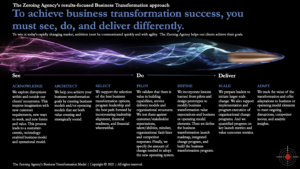The memo is out: CEOs aren’t just decision makers anymore—they’re the company’s Chief Storyteller.
McKinsey called it years ago, but let’s be honest—most leaders still confuse “strategy deck” with “story.” And while anyone can parrot the phrase vision and values, very few can make you feel them.
The question is no longer if you should tell stories. It’s this: How do you build the storytelling skill that separates forgettable leaders from the ones people would follow through fire?
From Talking Points to Real Narratives
Here’s the trap: executives think storytelling is about polishing a speech. It isn’t.
It’s about noticing the raw material of a good story in real time—a customer breakthrough, a failure you learned from, a moment that shaped the culture—and turning it into something people can connect with.
That’s the first discipline: listen for the signal.
Once you catch it, you can shape it: Where did we start? What changed? Where are we going next? That simple arc beats any “bullet-point manifesto” you’ve been reciting.
Building the Muscle
Knowing what a story looks like isn’t enough; you need to craft it.
Think of three tools that separate the pros from the amateurs:
- Structure (setup → tension → resolution)
- Emotion (people don’t move on facts; they move on stakes)
- Detail (tiny moments—“the look in her eyes”—burn into memory)
Want to practice? Take a major win or failure from your last quarter. Rewrite the email you sent about it as a story instead. Make it human. Then share it with a peer and ask them this: Would you tell someone else about what you just read?
Living the Story You Tell
Here’s where most leaders blow it: they craft a narrative, then behave in ways that contradict it.
Your story is worthless unless your team sees it in your actions. That’s why McKinsey says the CEO has to embody the story. Every channel—LinkedIn post, boardroom presentation, town hall—is either reinforcing or eroding it.
Ask yourself: if someone watched me work for a week with the sound off, would they still understand what I stand for? If not, you’re just a narrator, not a storyteller.
Repetition Is Not Redundancy
Good storytelling isn’t a one-time TED Talk. It’s a cadence.
Top leaders build a rhythm: weekly internal moments, quarterly external narratives, crisis stories that clarify direction when everything’s on fire. Done well, people don’t think, I’ve heard this before. They think, I know exactly where we’re going.
This habit turns “CEO vision” from wallpaper into a compass.
Test, Learn, Evolve
Finally, understand this: stories aren’t precious—they’re prototypes. Share, watch reactions, and adjust.
You’ll know you’ve hit a nerve when your team starts repeating your stories back to you without prompting. Until then, keep iterating.
McKinsey’s data is clear: the leaders who thrive aren’t just telling stories—they’re learning from the way those stories land.
Real Strategies. Real Results.
Storytelling isn’t a soft skill. It’s a leadership edge.
Listen. Shape. Live. Repeat. Refine.
Do that, and you’ll stop giving speeches and start creating movements.
Because in the end, strategy may set direction—but story is what makes people move.
Sam Palazzolo





